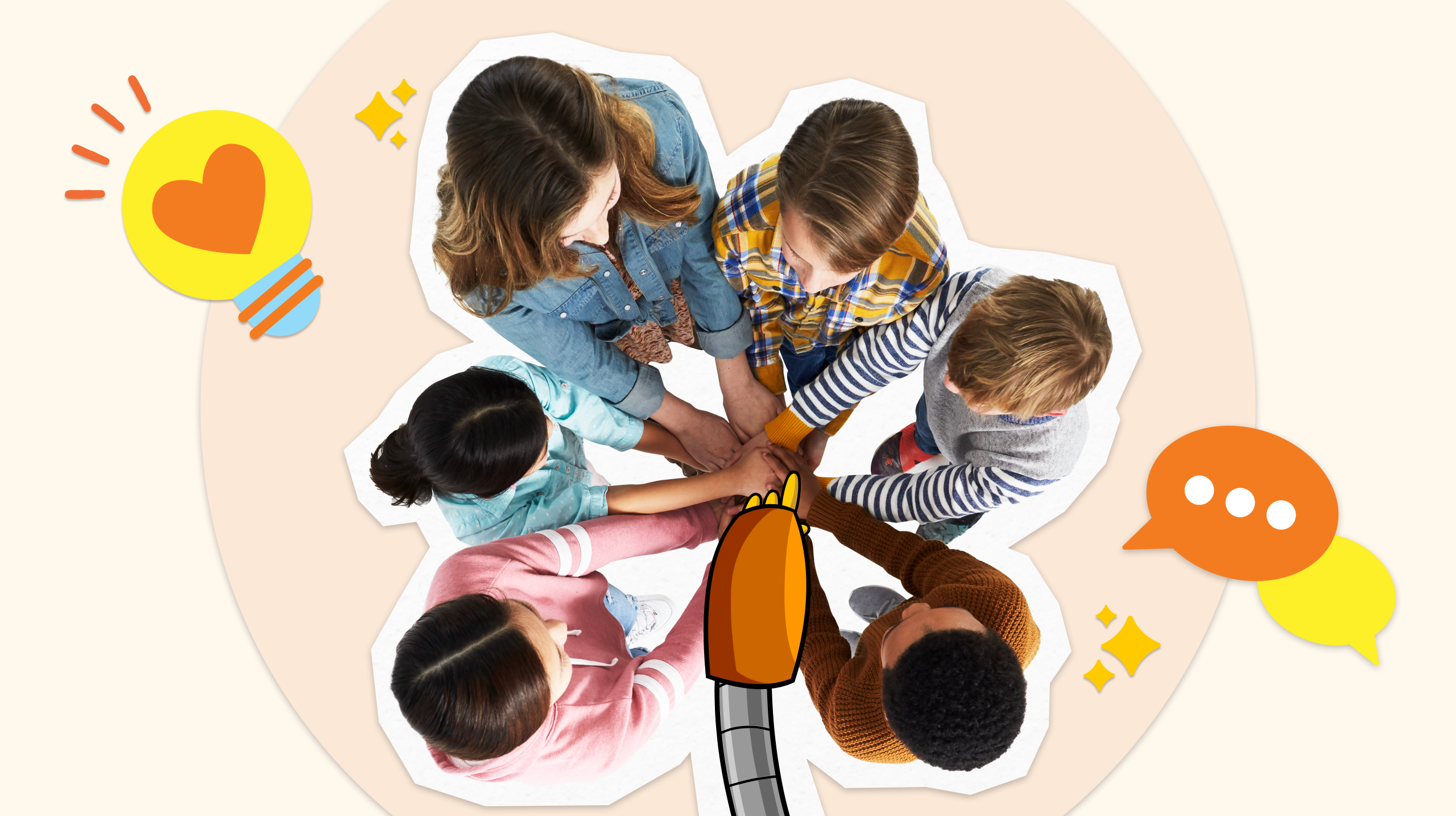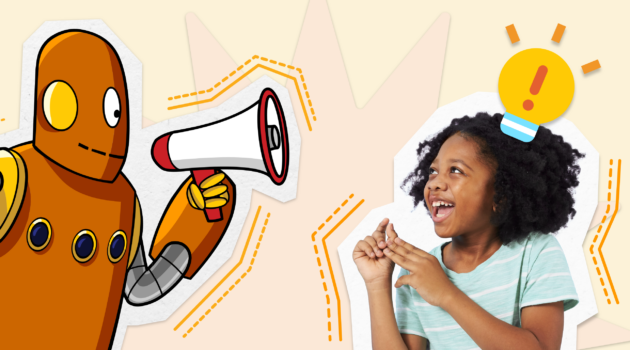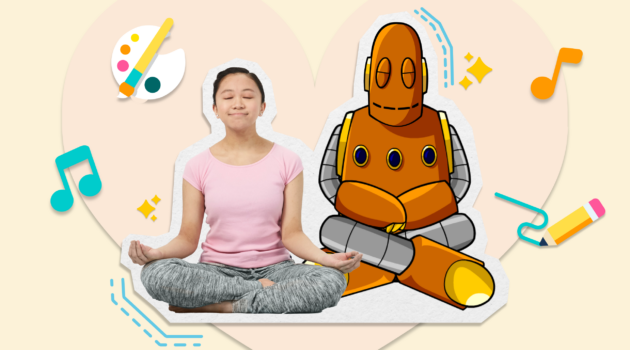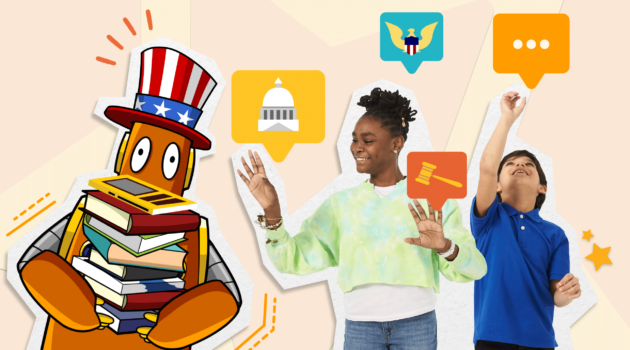Teaching Strategies
How to Motivate Students to Work in Collaborative Teams

There are many ways for students to learn in today’s classroom. Students frequently work in groups to sharpen their critical thinking skills, solve problems, or explore new opportunities. Sometimes, it can take time for teachers to help motivate students to work in collaborative teams. After all, all students and classrooms are unique. Read on to learn more from BrainPOPers, with tips on how to guide your students to work in teams and the benefits of year-round student collaboration.
How to boost student collaboration in the classroom
Student collaboration is just one touchpoint in the classroom experience. So, how do you ensure you keep all your students synced and connected? While there are multiple ways to collaborate, sometimes it takes work for students to get started.
According to Common Sense Media, it’s important to consider your goal and determine which tool or tactic you’d like to use to accomplish the project. For example, different forms of collaboration may include writing, drawing, brainstorming, and conversations.If you’re new to teaching or are more experienced, it always helps to get some additional support or resources to boost student collaboration. As an organization of former principals, educators, and staff, consider the following:
Tips to help motivate students to work in teams
Project-based learning
Encouraging students to work together and solve problems is a win-win.”Project-based learning is an excellent way to promote collaboration and boost student motivation. Have students choose from real-world, open-ended topics where they’re broken up into groups to research and present solutions to a problem. For example, students can choose from creating a PSA video on a community issue or create a model parking structure needed in the city or engage in a mock trial on an important societal issue.” – Melissa Prescott, BrainPOP Regional Sales Manager
Empower student leadership
All kids should get the chance to lead. Why not start in the classroom? It’s a natural space in which to stretch those skills. “I loved using ‘student teachers’ as a way for students to feel confident in their expertise and support other students who might not feel as confident. The fine line with this strategy is making sure you’re rotating your ‘student teachers.’ “- Jamie M., BrainPOP Account Executive
Initiate celebrations (small or big)
Everyone could use a pick-me-up or a note of gratitude, so encourage this kind of communication in your classroom. “Having celebrations and shoutouts are a great way to boost collaborative environments. Let students shout each other out when they see respectful conversations or collaboration.” – Nicolina Abruzzese, BrainPOP Regional Sales Manager
Set students up for future success
Collaboration skills can take time to nurture and grow. Every student learns differently–and that’s a good thing! “When students have opportunities to collaborate, they’re also working on other skills. Not only are students learning from each other, but they’re also learning problem-solving skills, communication, listening to their peers, working with different personalities, how to be confident in decision-making, and delegating tasks. These are all skills needed in the workplace to set students up for success in their future paths. – Melissa Prescott, BrainPOP Regional Sales Manager
What are the benefits of student collaboration in the classroom?
Student collaboration has multiple benefits, no matter your class size or grade level. What’s terrific about collaboration strategies is that you can implement and personalize them depending on how your classroom responds to the new process.
Projects will allow students to choose interesting topics with a purpose while improving collaboration skills. Also, with project-based learning, students work on the 5 C’s:
- Connecting
- Communicating
- Curating
- Collaborating
- Creating
Boost class engagement
Classroom engagement is critical to class retention, learning, and fulfillment. “Collaboration leads to higher engagement and buy-in and helps with students’ social skills at the same time!” – Jamie M., BrainPOP Account Executive
Strengthen active listening and communication
Every student should get the chance to work on communication, and what better time to stretch these skills than with your classmates? “When students collaborate, they learn more than just the concept or topic. Student collaboration promotes student interaction with peers. They learn active listening and communication skills. They learn how to work productively with others.” – Nicolina Abruzzese, BrainPOP Regional Sales Manager
Explore your classroom space from a different lens
You may love your classroom setup, but is it fit for all learners? Can students work async but also collaborate? Consider how the design of your classroom can benefit and impact your learners. For example, “Think about how your classroom setup will encourage collaboration and dialogue, also how the placement of objects can inspire collaboration, such as small groups of desks, pairs of desks, or learning pods. – Nicolina Abruzzese, BrainPOP Regional Sales Manager
Help students work together in collaborative teams year-round
Motivating students to work in collaborative teams can do so much for your classroom culture in the long term. Students working together in teams can inspire learning, joy, and a sense of understanding. It helps build confidence and a sense of community.
For more teaching resources, visit our Growing with BrainPOP hub.
Kelli Rascoe is a Sr. Content Strategy Manager at BrainPOP. She has nine years of experience in writing, content marketing, and strategy for tech and Fortune 500 brands. She is also the momma to a princess scientist and a pack of rescue pups.






